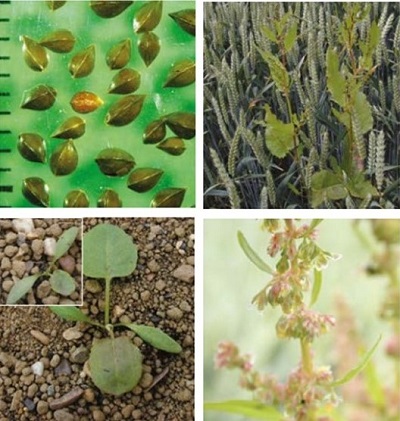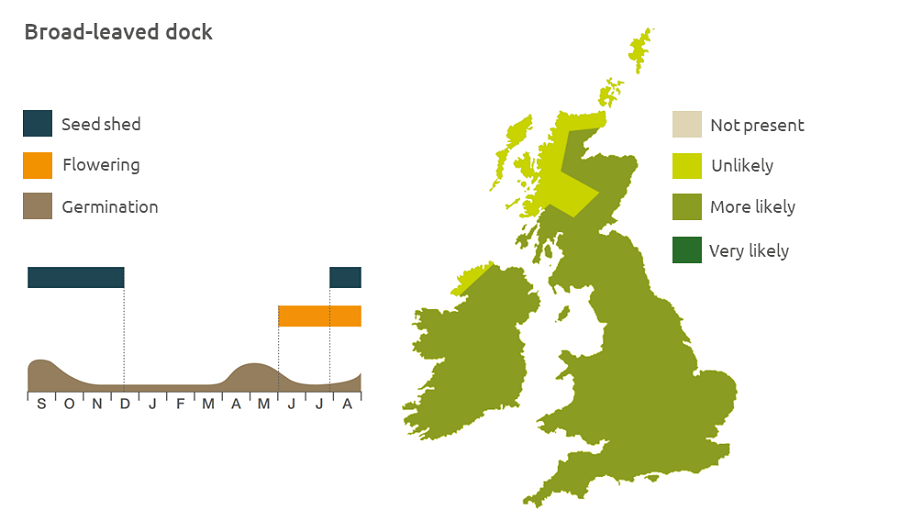- Home
- Knowledge library
- Distribution and biology of broad-leaved dock in the UK
Distribution and biology of broad-leaved dock in the UK
This dock species is a broad-leaved weed on arable land. Find out how to identify and control it.
Overview
Broad-leaved dock (Rumex obtusifolius) occurs more rarely on arable land than does curled dock, with which it is able to hybridise. It tends to grow in compacted and damp soil around field edges and in gateways. It overwinters as a rosette, flowering in the second year. It can reproduce from root fragments detached by ploughing
- It has value to biodiversity
Description
It is an upright perennial with a long tap root, branched stems and sturdy broad leaves. The flower spike may be branched with clusters of flowers spaced apart.
Key features
Leaves: The blades of the first true leaves are broad, rounded at the tip and heart-shaped at the base.
Flowers: The margins of the flowers are toothed.
Fruit: The segments have spiny teeth.

Location and life cycle

Geographic distribution
Broad-leaved dock grows in meadows, pastures, ditches, waste ground and neglected cultivated ground up to an altitude of 850 m.
Soil type
It prefers high-nitrogen, humus-rich clay or loam soils.
Seed statistics
- Seed longevity: >5 years
- Germination depth: 5 cm
- Seed weight: 1.43 mg
- Seeds/flower: 1
- Seeds/plant: 7,000
Management
Broad-leaved dock can be controlled with herbicides in cereals, grass and uncropped land, but can be difficult to control in other crops except by pulling or hoeing.
For advice on herbicides, please speak with your agronomist or adviser.
When was this information last updated?
This page is based on content from the encyclopaedia of arable weeds publication. Since it was first released in 2008, the publication has been redesigned several times but not revised. However, it remains a good foundation for general information on the distribution and biology of weeds.

